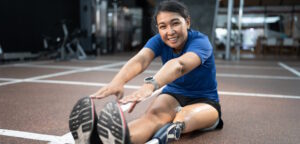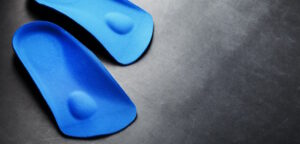What to Expect When Using a Prosthetic Leg
Mobility is part of what makes us human. It can be easy for most people to take something as simple as walking for granted, right up until they can no longer do it. For patients who have or are scheduled to have an amputation to one or both legs, the issue of mobility always comes up.
Patients know that advanced prosthetics and orthotics exist, but the idea of using a prosthetic leg is a foreign concept that can trigger a wide range of emotions. Feelings of fear, doubt, and apprehension are completely and totally normal. Based upon the work we’ve done with clients here at Cotton Orthotic & Prosthetic Associates, we can tell you that much of the unease surrounding prosthetic legs and mobility issues are rooted in fear of the unknown.
According to a study published in the Archives of Physical Medicine and Rehabilitation, the majority of those challenged with limb loss are 45 years of age or older. To go through limb loss and need to relearn to walk as a fully grown adult is a significant life change. Learning to walk with a prosthetic isn’t as simple as relearning to be mobile again. It is a full-fledged journey that challenges a person’s physical limits and emotions. However, that journey can be made slightly easier if you know what to expect when integrating a prosthetic leg into your daily life.
The Common Challenges of Using Advanced Prosthetics and Orthotics
The process of learning how to use a prosthetic leg is by no means short or easy; however, it is far less mentally and emotionally-taxing if you have an idea of the challenges that lie ahead.
These challenges include:
The type of amputation determines the baseline of difficulty: Leg amputations come in two varieties – above-knee and below-knee. With a below-knee amputation, the knee joint is left intact, which affords more stability when walking and bearing weight. An above-the-knee amputation removes the knee joint, which means the advanced prosthetic leg will utilize a knee joint. This can make bearing weight feel strange and unnatural, and usually creates additional challenges.
Learning to walk with a prosthetic is a long road: The big question that everyone wants to know when learning to use a prosthetic leg is when they’ll be able to walk again. That’s a bit of a loaded question because everyone’s journey is specific to them. Additionally, other factors such as adaptability and physical ability play a role as well. Rather than focusing on the end goal of walking with complete independence, instead, try to focus on getting a little bit better each day. Learning to walk with a prosthetic leg is a process measured in inches – not leaps and bounds.
Mistakes will happen: As is the case with trying to learn any new skill, mistakes are going to happen. They are part of the process. Don’t dwell on them. Instead, learn from them and continue to work through them.
An Overview of Learning to Walk with a Prosthetic Leg
Once you have your amputation surgery, there will be a recovery period lasting approximately 6-8 weeks in which you are wheelchair bound. This affords you mobility while you recover and mitigates the chances of falling or injury. Eventually, the time will come when physical therapy (PT) is set to begin. This varies from person to person but can be summarized into the following main steps.
Step #1 – The Preparatory Prosthesis: This is most often the first prosthesis you will utilize as an amputee. Due to significant residual limb volume loss, this prosthesis is commonly only worn for the first 6-8 months. Why? As the limb experiences decreased size from less swelling (edema) after surgery and normal muscle atrophy, the socket simply does not fit properly and requires a replacement socket/prosthesis.
Step #2 – The Definitive Prosthesis: This prosthesis is fabricated when the residual limb has reached a stable volume size, or the preparatory prosthesis is causing skin issues or safety concerns due to the ill-fitting socket (due to physiological changes in the residual limb). Frequently, the patient’s functional level (ability level) changes, which also warrants utilization for a higher-functioning knee or foot to allow for higher levels of activity.
Have Questions About Advanced Prosthetics and Orthotics? Contact Us!
People who are dealing with limb loss or who are scheduled for it per a planned medical procedure usually have a million questions about how they will adjust. Regaining mobility through the use of a prosthetic leg is a huge part of the journey.
As a leading provider of advanced prosthetics and orthotics, Cotton Orthotic and Prosthetic Associates has been proudly serving the greater Kansas City metropolitan area for several years. If you are looking for prosthetics near you that are affordable, reliable, and will afford you mobility, get in touch with us today.
Call (913) 338-2672 or email us directly using the contact form on our website.







